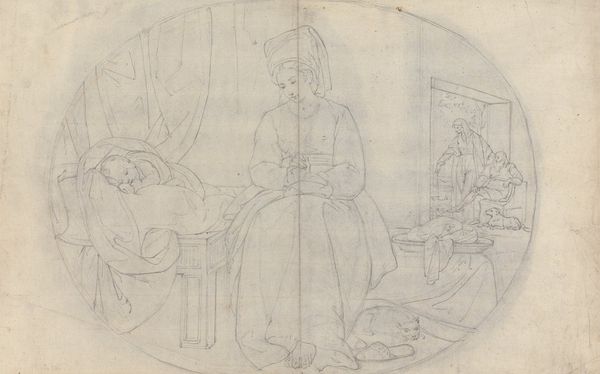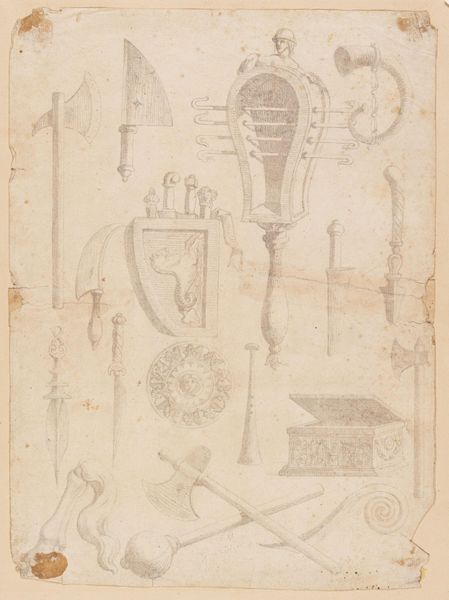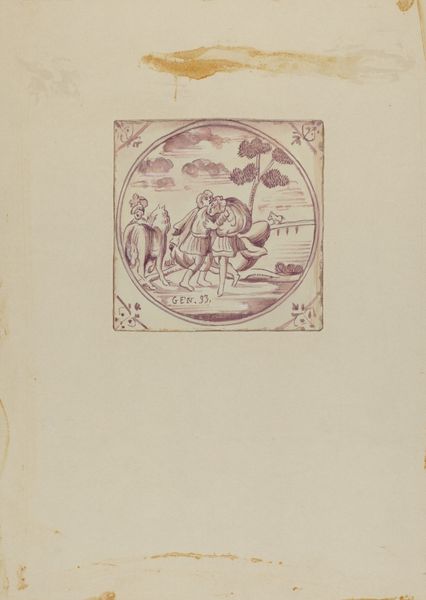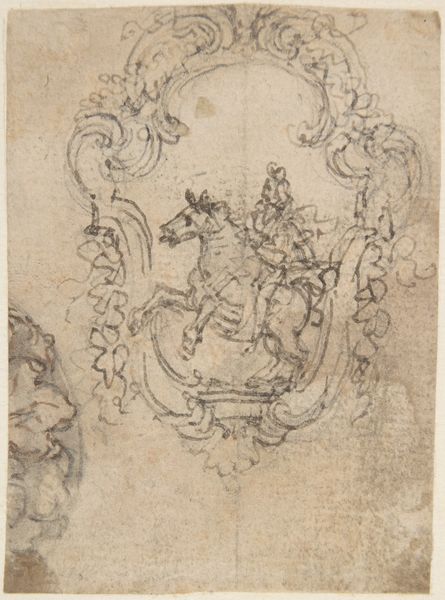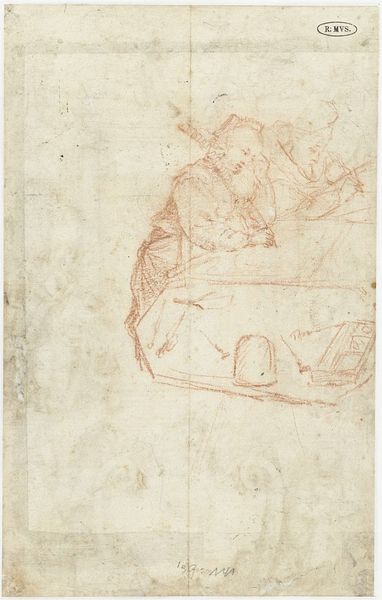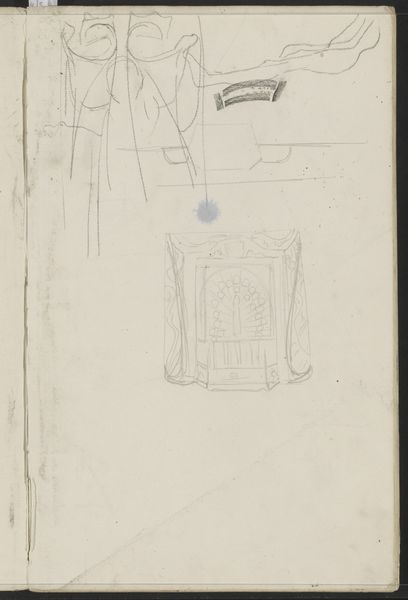
Rond medaillon met een antieke vrouwenfiguur die een boek leest, bij een globe, een zandloper, papierrollen en een olielamp c. 1864 - 1894
0:00
0:00
drawing, paper, pencil
#
portrait
#
drawing
#
classical-realism
#
paper
#
coloured pencil
#
pencil
#
academic-art
Dimensions: height 142 mm, width 123 mm
Copyright: Rijks Museum: Open Domain
Editor: Here we have Henri Cameré’s "Round medallion with an antique female figure reading a book", created sometime between 1864 and 1894 using pencil and colored pencil on paper. There’s a really strong sense of academic classicism about it; it’s lovely in its simplicity, but it feels like a study for something larger. What’s your take on it? Curator: It's intriguing how Cameré presents this almost allegorical figure. We see her surrounded by the tools of knowledge: a globe, an oil lamp, scrolls… tools that signify learning. It appears to reference a historical preoccupation: the personification of wisdom as a female figure, linking women with intellect, though that association has obviously been shaped by socio-political biases through the ages. What statement do you think Cameré is making, given that historical backdrop? Editor: That’s a great point. Maybe he’s challenging those biases or reaffirming the importance of female intellectualism? It is just a drawing, so is there something to read into the format itself? Curator: Precisely. A round medallion suggests antiquity and the preservation of knowledge. Consider where such a piece might exist – perhaps intended for printmaking, decorating books promoting intellectual pursuits, or circulating within academic circles. Its public role would dictate its impact and influence on the broader understanding and access to knowledge at the time. Editor: So, the intention behind displaying this image shapes its meaning? Curator: Absolutely! Context is everything. Without understanding where and how this image would circulate, we lose sight of the socio-political motivations. What’s powerful is seeing this intersection of artistic skill, classical symbolism, and potential use within specific academic circles. Editor: I never considered the political and social implications so deeply before. This has opened my eyes to seeing more than just aesthetics in historical art. Curator: And for me, reflecting on how those social roles can evolve over time with artwork as their marker of sorts.
Comments
No comments
Be the first to comment and join the conversation on the ultimate creative platform.

